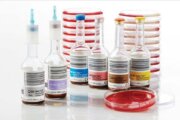The whites of Weldon Bradshaw’s eyes were actually yellow.
That matched his pink-turned-golden, severely jaundiced skin. An autoimmune disease called primary sclerosing cholangitis — the same that killed football great Walter Payton — had caused Bradshaw’s liver to fail, and his kidneys were shutting down as a result. In the intensive care unit at VCU Medical Center in Richmond, he held on. Machines, including dialysis, were keeping him alive, says the now 67-year-old Bradshaw, who lives in Richmond, Virginia. He’d been told six days prior by his transplant surgeon that without a new liver, he wouldn’t survive the week.
Bradshaw had scored off the charts on a measure used to assess the severity of liver disease (which, in his case, had been caused by the autoimmune disorder PSC) — a score that’s used to determine how urgently a patient needs a liver transplant called Model for End-Stage Liver Disease, or MELD; while patients typically range between around 6 (less sick) to 40 (gravely ill), Bradshaw’s score was near 50. Then a call came in at 2 a.m., he says, that a donor liver was available from an 84-year-old woman who’d died of stroke in Wilmington, North Carolina.
“My thought was, ‘Yikes, that’s a pretty old liver.’ But it was never a matter of, ‘Do I take it or not?’ Because I knew I didn’t have any option,” Bradshaw recalls of the flourish of activity in the early morning hours of Nov. 14, 2012. Though atypical to transplant such an old organ, particularly into so sick a patient — and one who was 20 years the organ’s junior — Bradshaw, who was 64 at the time, didn’t have time to wait for another organ. “I trusted these folks with my life, literally,” he says of the health care team who worked to secure and complete the transplant procedure, including his lead surgeon Dr. Robert A. Fisher, who is now at Beth Israel Deaconess Medical Center in Boston.
As of Friday morning, 121,409 people in the U.S. were on the waiting list for a transplant organ, according to the United Network for Organ Sharing. That includes 102,333 people who need kidneys (1,943 of those who also need a pancreas), 14,749 waiting for a liver and 4,223 biding their time awaiting a new heart (including 45 waiting for a dual heart/lung transplant), among others in the queue for badly needed organs. “The donor shortage continues to really worsen gradually every year relative to the number of recipients,” says Dr. David Klassen, chief medical officer for UNOS. Though there have been some bright spots — like a record number of organs transplanted in 2015, at 30,973 — in general, he notes demand for organs continues to outstrip supply. “Waiting times are getting longer,” Klassen says.
That’s led to heightened interest in some what health providers dub “marginal organs” and extended, or expanded, donor criteria. “When you’re talking about marginal or expanded donor criteria organs, they either carry a higher risk of disease transmission or a higher risk of the organ failing,” explains Dr. John Renz, a professor of surgery at the University of Chicago Pritzker School of Medicine in Chicago who specializes in liver transplantation. That could be an organ from an older patient that’s more likely to fail as a result of its age or because its quality is diminished by physiologic issues, like a fatty liver; or one where the donor was known to have a virus, such as hepatitis B or hepatitis C, or thought to be at risk for transmitting such a virus. Renz, who is interested in marginal organs and expanded donor criteria, co-authored an ethics piece published in February in the American Medical Association Journal of Ethics evaluating the title question: “Should Physicians Attempt to Persuade a Patient to Accept a Compromised Organ for Transplant?”
The question of whether to use a “compromised organ” is more likely to come up in regards to heart, liver and — to some extent — lung transplants, Renz says. “Because those patients tend to have an immediate need without any form of replacement therapy” like dialysis, for example, which can be used for a person who has kidney failure to perform the function of the kidneys. By contrast, he adds, there’s less interest in using marginal organs for kidney and intestine transplantation, for example, because of the availability of such replacement therapies that allow patients to live longer without a transplant.
While grading measures evaluate everything from the age of the donor to the likelihood an organ transplant could transmit disease, some risk is assumed with all transplantation procedures and organs. “It’s not like everything is a regular organ, and everything else compromised. It’s sort of a spectrum,” says Klassen, who thinks it’s more fitting to talk about transplant organs in terms of that continuum.
Before making any decisions, patients need to have a frank, informed conversation with doctors to “assess their degree of illness and their urgency in getting a transplant,” he says.
“I think the majority of organs out there will do well certainly for the right patient, and I would argue that for most patients that is the case,” Klassen says. But he emphasizes the importance of transparency as well as talking about what happens if a patient should pass up an organ, such as when the next might become available and the possibility of getting transplanted if you don’t take an organ that’s available.
Ideally, patients should begin the discussion before an organ is available for transplant, Renz says. “So that when you have an organ immediately available, they’re not hearing these things for the first time. Because, No. 1, it can be overwhelming and, No. 2, it can be coercive. If you have a patient who has a very bad cancer, it behooves you when you’re seeing them as an outpatient and there’s no organ available, to kind of explain to them the real risk … they have [from] cancer,” he says — such as how fast the cancer is growing and the projected wait time for a transplant organ. “So we can increase the available pool of organs to you by taking higher and higher levels of risk.”
That kind of nuanced conversation is difficult — if not impossible — to have if you’re talking about it for the first time when the call comes in, day or night, that an organ is ready for transplant, and the decision to allocate the organ to a patient needs to be made right away.
“What the physician has to do is kind of balance what risk would be excessive. So, for example, if we had a donor who had a brain cancer, now those donors can have up to a 10 percent chance of transmitting that brain cancer, and if it is transmitted that patient will die of the brain cancer,” Renz says. “So that might be a good organ for the patient who has a very aggressive tumor [in their liver] we’re struggling to control. And it might be a totally inappropriate organ for someone further down the list who is very stable.”
As Bradshaw describes it, the upshot of having a higher risk, or “marginal,” liver implanted couldn’t have been bigger for him: “I’m living life like I want to,” says the active middle school teacher, school administrator and high school varsity cross country and track coach. He takes immunosuppressant medications that act as anti-rejection drugs since his transplant leaves him more vulnerable to infection; but he’s remained relatively healthy with minimal complications, following a virus related to the transplant that landed him back in the hospital in 2013, but was successfully treated with antibiotics. He says as a result of his transplant he also no longer suffers from the autoimmune disorder PSC, though there’s always a risk it will return. “I know for a fact I would not have survived that day without a new liver,” Bradshaw says of the day more than three years ago that he received his transplant. “That was either [going to be] the first day of the rest of my life, or the last day of my life.”
More from U.S. News
7 Things You Didn’t Know About Lung Cancer
10 Ways to Prepare for Surgery
14 Things You Didn’t Know About Nurses
Should You Accept a ‘Compromised Organ’ for Transplant? originally appeared on usnews.com







